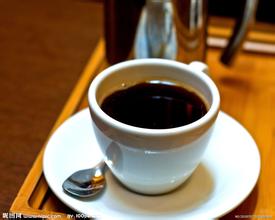Description of the characteristics and flavor of Latin American coffee beans an introduction to the grinding scale manor by the method of taste treatment
Description of the characteristics and flavor of Latin American coffee beans an introduction to the grinding scale manor by the method of taste treatment
Once the second largest coffee producer after Brazil, Colombia, which has been overtaken by Vietnam to become the world's largest supplier of washed beans, has become synonymous with good coffee after years of image-building. Despite the balanced flavor, thick texture, famous sour taste and aroma, most Colombian beans are mediocre and have no personality if you taste them carefully. When choosing Colombian beans, you should not only look at the grade marks, but also pay attention to the producing areas, because Colombia is currently graded according to the size of beans, so the Supremo or Excelso on the coffee bag refers to the size of beans rather than the quality, but the size of beans is not necessarily related to the flavor of the entrance, but is closely related to the altitude of the place of origin and taste, so this grading system is often criticized. In fact, most of the medium,
South American countries have switched to altitude classification, and only Colombia maintains this traditional classification system, which many Colombian coffee makers have recognized and have begun to demand a change in the classification system. Colombia's famous producing areas include Medellin, Armenia and Manisales, so the word MAM is sometimes seen on coffee bags, indicating that the coffee beans may come from any of these three producing areas. Almost all of Colombia's finest coffee beans come from traditional small farms, which grow old coffee trees from Typica, which are well planted and carefully harvested and treated, so they are of high quality but relatively low in yield.
El Salvador (El Salvador) aroma 4 minutes brightness 4.5 minutes mellow 3 minutes flavor 4.5 points aftertaste 4.5 points
Suitable for baking: if City/Full city city has a preference for heavy flavor, it doesn't hurt to bake it a little deeper.
Most people remember El Salvador as a place with frequent wars, but it is true that years of civil war have prevented El Salvador's coffee beans from standing out in the international market. in fact, El Salvador has three conditions: soil, height and climate. It should not be difficult to produce coffee as spectacular as Guatemala and Costa Rica, and coffee could be grown in El Salvador as early as the 19th century. It was once even the most important cash crop in the country. In recent years, El Salvador has a stable political situation and an open market economy, so its coffee beans have gradually come to the fore in the international market. Most of the Salvadoran coffee is certified organic coffee, the taste is fresh and bright, the fruit flavor is also rich, the flavor is slightly thicker than the beans of neighboring countries, the overall pull is quite good, I believe that it will be better and better in the future.
Panama (Panama) aroma 3.5 minutes brightness 4.5 minutes mellow 3.5 minutes flavor 4.5 points aftertaste 4.5 points
Suitable for baking: Light/Medial/City shallow to medium baking, shallow to the end of the first explosion; do not enter the second explosion at the deepest, otherwise it will damage its clean brightness and reduce its complexity.
Coffee dealers often joke: "good Hawaiian beans are actually Panamanian beans, good Jamaican blue beans are Panamanian beans, and good Costa Rican beans are actually Panamanian beans." Although it is a joke, what is revealed is the high praise of Panamanian beans in the boutique coffee world! Panamanian coffee beans are cheap, high-quality and stable, and often easily surpass other famous coffee beans, which is why many Panamanian beans are passed off as other high-priced beans. High-end Panamanian coffee beans have a complex and pure flavor, with just the right mellow and bright taste, it is not too much to call it the most valuable coffee. Panamanian coffee is grown at a high altitude, and many famous estates are operated for generations, with a long tradition and rich experience, so the coffee produced is naturally of high quality.
Nicaragua (Nicaragua) aroma 3.5 minutes brightness 4 minutes mellow 3.5 minutes flavor 4 points aftertaste 4 points
Suitable for baking: City/Full city people who like deep-baked taste can try Jinotega and Matagalpa, baking beans when the second explosion is dense, when the flavor is thick but well balanced, with a strong bitterness and sweetness, it is very suitable for Espresso. Of course, Nicaragua beans are also very suitable for medium baking, so it is recommended to try them all.
Like most Central American coffee-producing countries, Nicaragua has good growing conditions. Most of the high-end coffee beans come from high-altitude estates, and these beans represent "SHG grade" (Strictly High Grown). Most of Nicaragua grows traditional coffee varieties, such as Tibica, Bourbon, National Treasure Coffee, etc., as well as some Caturra coffee trees. High-end Nicaraguan coffee has the most classic flavor of coffee: thick texture, clean taste and overall balance. SHG is the only coffee in Central America without sharp acidity. Nicaraguan coffee is often underestimated, such as Sinotega and Matagalpa, which are better than many Colombian coffees, while Segovia is also good, somewhat similar to Mexico's Oaxaca.

Important Notice :
前街咖啡 FrontStreet Coffee has moved to new addredd:
FrontStreet Coffee Address: 315,Donghua East Road,GuangZhou
Tel:020 38364473
- Prev

Why the number of coffee machine grindness is smaller and finer?
Coffee grinder blade grinder is another common bean grinder, its working principle is that a fast rotating blade will cut coffee beans into fine particles. This kind of bean grinder is usually cheap, but the coffee powder it grinds is of average quality because the blade generates a lot of heat when rotating and cutting. In addition, the coffee powder cut by the blade bean grinder has large particles.
- Next

Introduction to the grinding scale of Ethiopia Esopia Lion King coffee bean flavor description method
Ethiopia Esopia Lion King Coffee Bean Flavor description method Grinding scale introduces washed coffee accounts for 35% of exports. Good quality washed coffee is processed with freshly picked fully ripe fruit, picked carefully and closely monitored by professionals. The picked clean coffee beans are pulped on the day of picking, then fermented, washed, dried and peeled. After processing
Related
- Detailed explanation of Jadeite planting Land in Panamanian Jadeite Manor introduction to the grading system of Jadeite competitive bidding, Red bid, Green bid and Rose Summer
- Story of Coffee planting in Brenka region of Costa Rica Stonehenge Manor anaerobic heavy honey treatment of flavor mouth
- What's on the barrel of Blue Mountain Coffee beans?
- Can American coffee also pull flowers? How to use hot American style to pull out a good-looking pattern?
- Can you make a cold extract with coffee beans? What is the right proportion for cold-extracted coffee formula?
- Indonesian PWN Gold Mandrine Coffee Origin Features Flavor How to Chong? Mandolin coffee is American.
- A brief introduction to the flavor characteristics of Brazilian yellow bourbon coffee beans
- What is the effect of different water quality on the flavor of cold-extracted coffee? What kind of water is best for brewing coffee?
- Why do you think of Rose Summer whenever you mention Panamanian coffee?
- Introduction to the characteristics of authentic blue mountain coffee bean producing areas? What is the CIB Coffee Authority in Jamaica?

